Overview
Role
UX Prototyper & Researcher
Timeline
09/2018 – 12/2018
Type
Augmented Reality Glasses
This project, Life As a Gym (LG) was a project for the Ubiquitous Technology & Design course at the University of Michigan. The premise of the course was to uncover a problem that ubiquitous technology can help make better.
My team and I focused on using technology to help students take healthy fitness choices throughout their day.
My responsibilities revolved around creating low-fidelity prototypes, leading the research methodologies, and maintaining the architecture of the designs for the augmented reality experience.
My Process
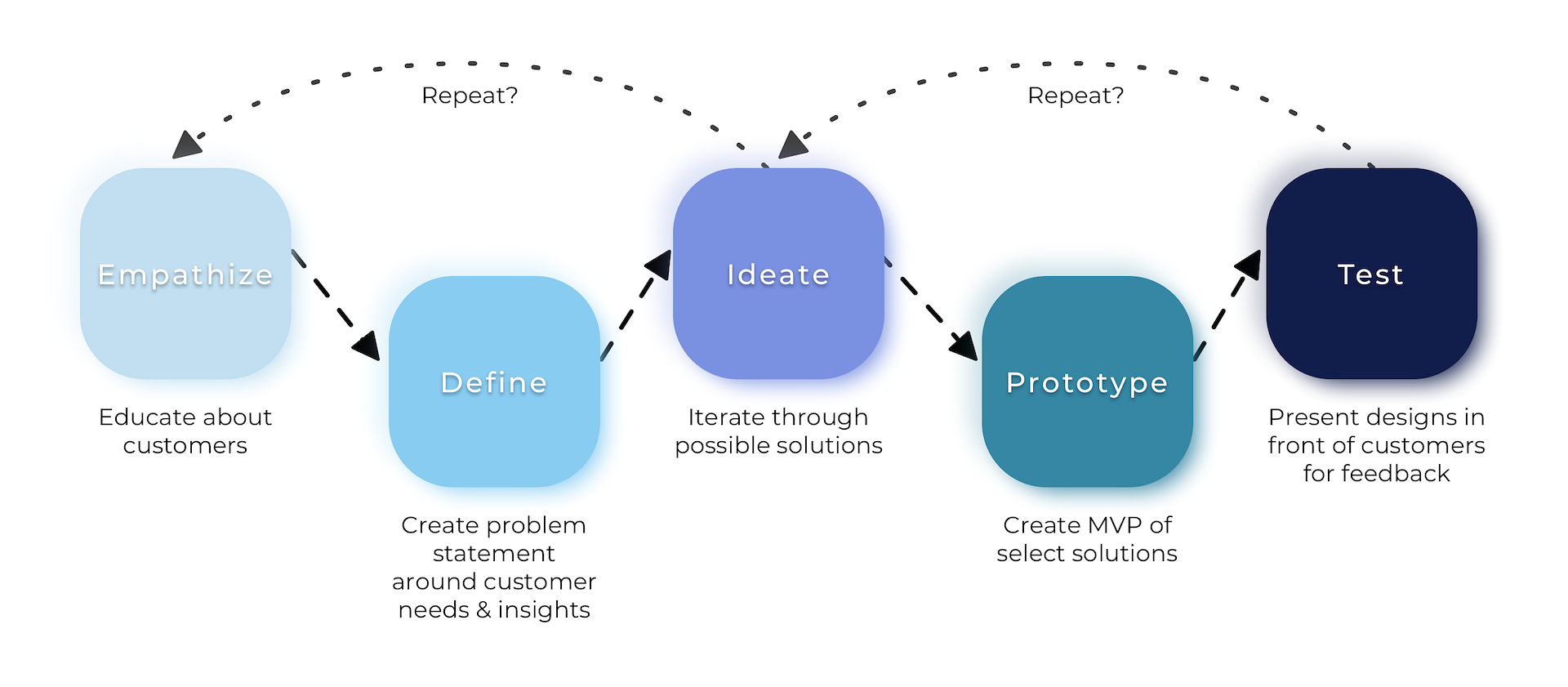
Motivation
During our preliminary research, we knew we wanted to focus on helping students at the University of Michigan live healthier lives. When we surveyed a random sample of students we learned that 40-50% of all college students do not get the recommended amount of physical activity. Although surprising, we had hoped that by creating healthy habits through light reminders, we’d be able to instill a lasting positive impact on students.
"How might we design a solution that helps students find moments of healthy habits throughout their day"
The Approach
We began by focusing on an initial set of questions that had to be answered. Then we prioritized the best research methodologies to answer those questions.

Research Results Themes
After conducting the research and analyzing our data we consolidated our direction into 3 themes that our future solution would have to consider.
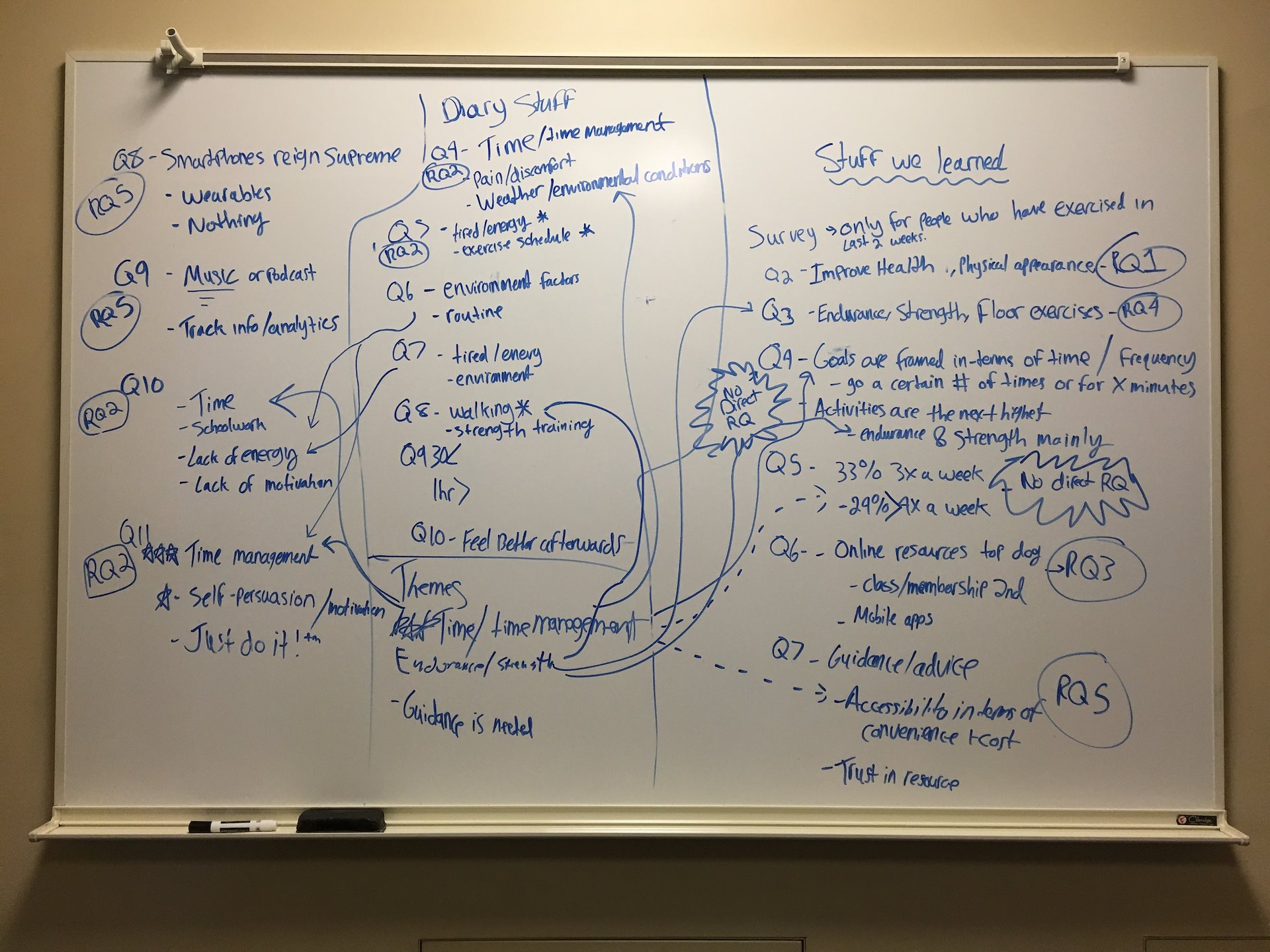
Theme 1: Time Considerations
The ubiquitous technology would have to help students find moments of healthy choices in small bursts due to student’s low time availability.
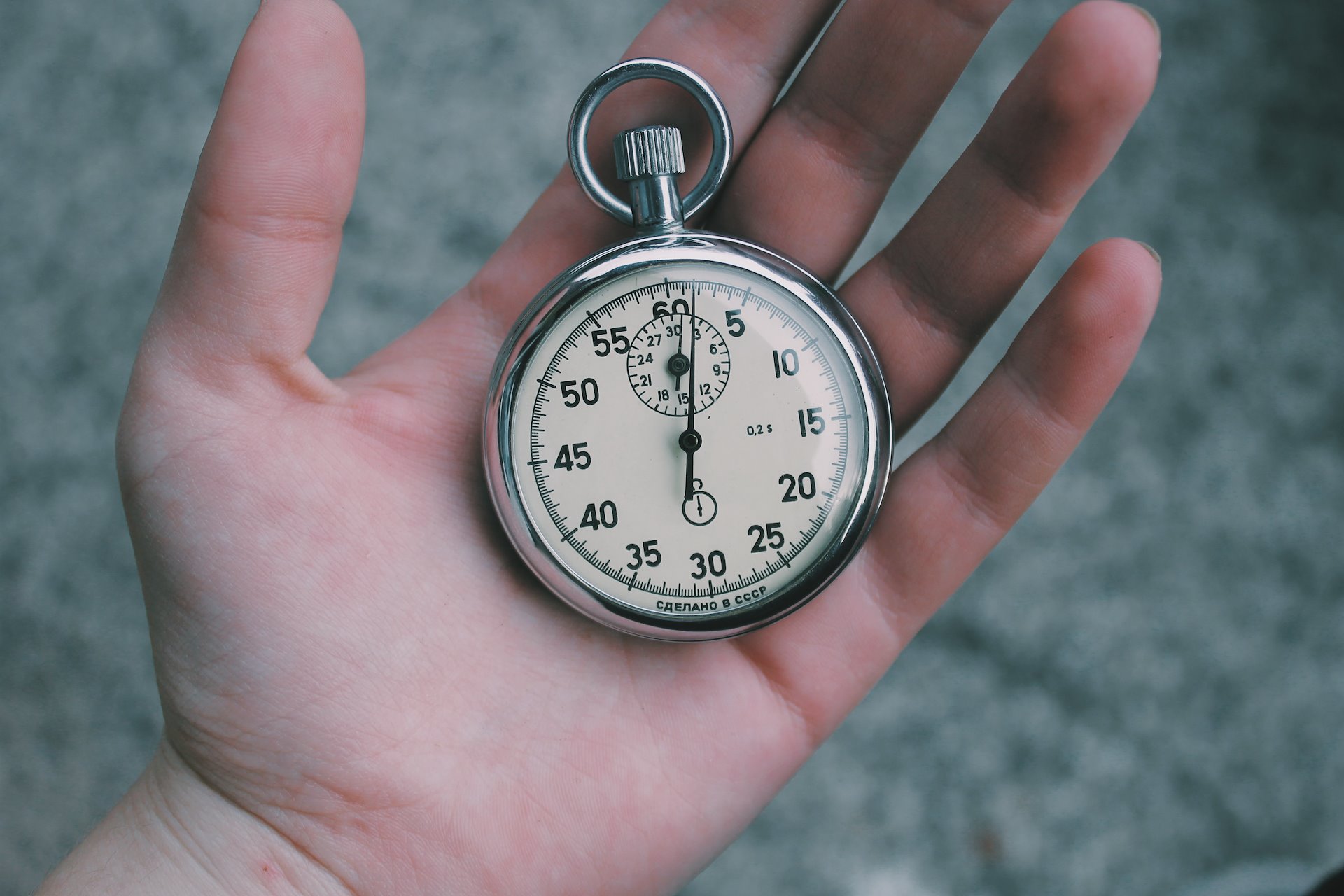
Theme 2: Graceful Fit
The technology should respect social norms and limit bringing any further attention to the technology or the user. This also includes not overwhelming the user.
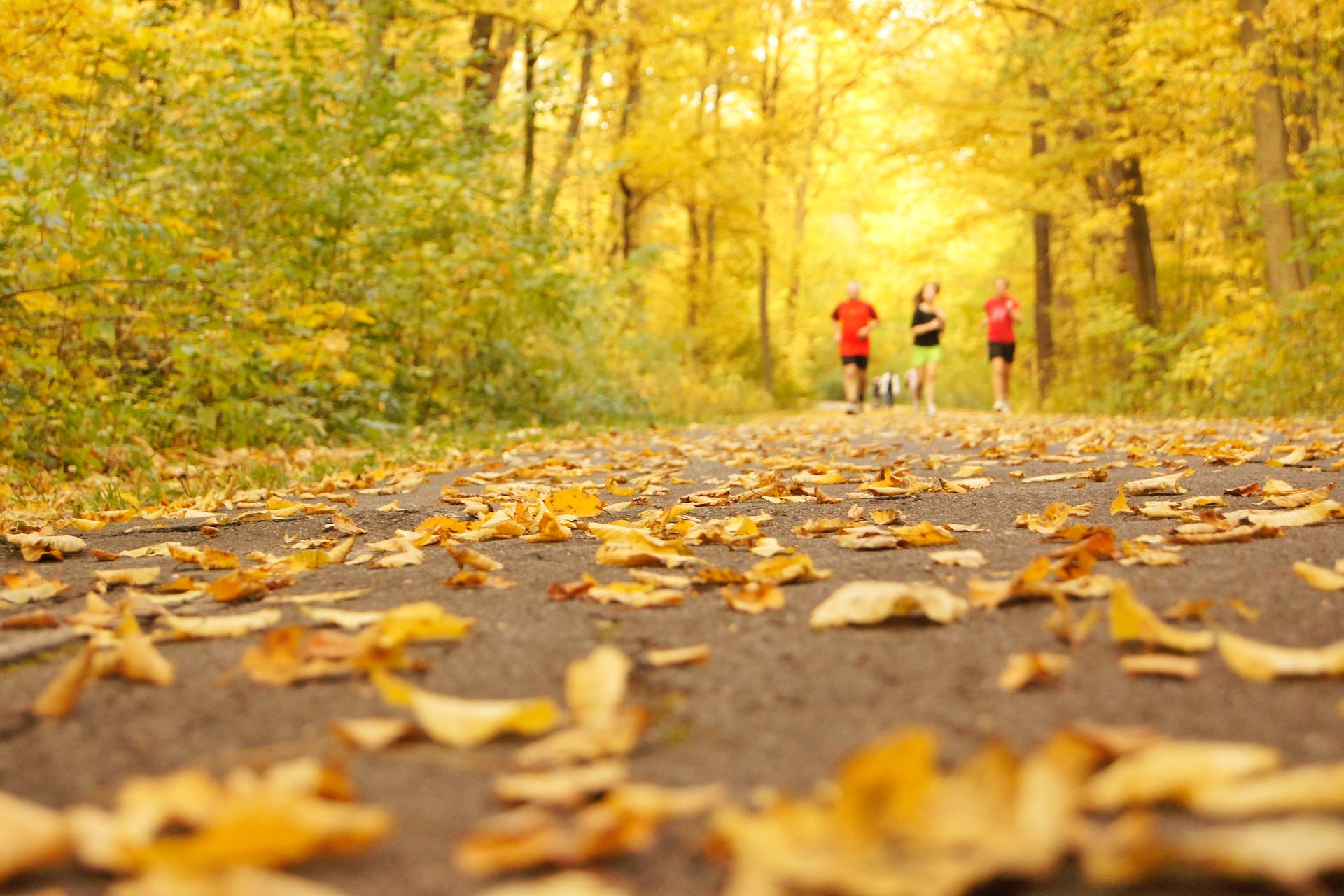
Theme 3: Privacy Safety
Finally, privacy is foundational to any ubiquitous technology and especially for this project and our users. The respect of the user’s fitness privacy in exchange for trust was critical for this project.

Narrowing the Solution
After rounds of brainstorming and ideation, we narrowed down our project to 3 different solutions. As part of the course assignment, we were tasked to narrow down to a single solution that met most of the project’s themes & requirements.
Ultimately we narrowed it down to the augmented reality glasses concept because the biggest factor for our target users was time management and the other concepts came short in that area.
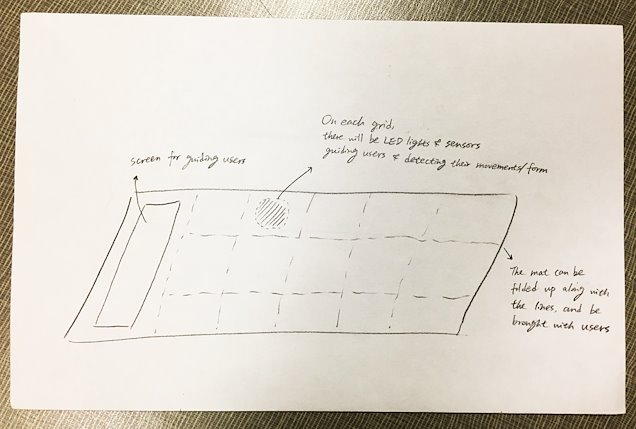
Smart Exercise Mat
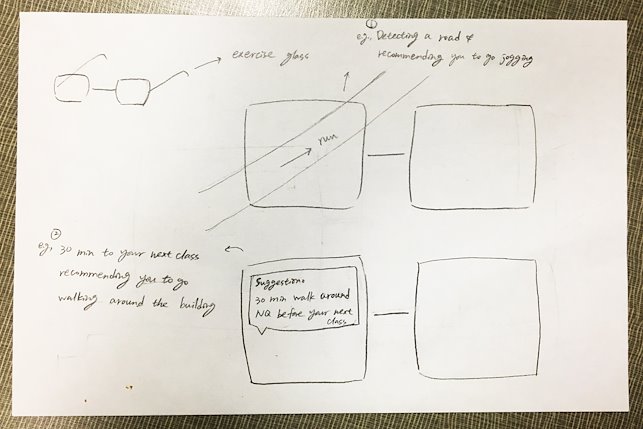
Life as a Gym augmented glasses
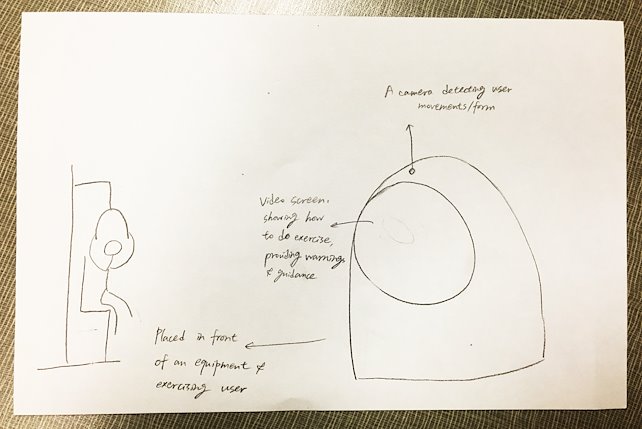
Smart Gesture Guide: Personal Trainer
Life as A Gym AR Glasses
A pair of augmented reality glasses that found moments of exercise for the busy student as they go about their day.
Key Features of the
Final Concept
The augmented reality glasses focused on 6 unique functionalities that provided the best user experience.
- Architecture Overview
The product would use computer vision, machine learning, and AR technology to recommend moments of exercise and alternative paths that the student could take. The exercises that LG recommends can be seen in the world as 3D objects that guide the user on how to complete those exercises.
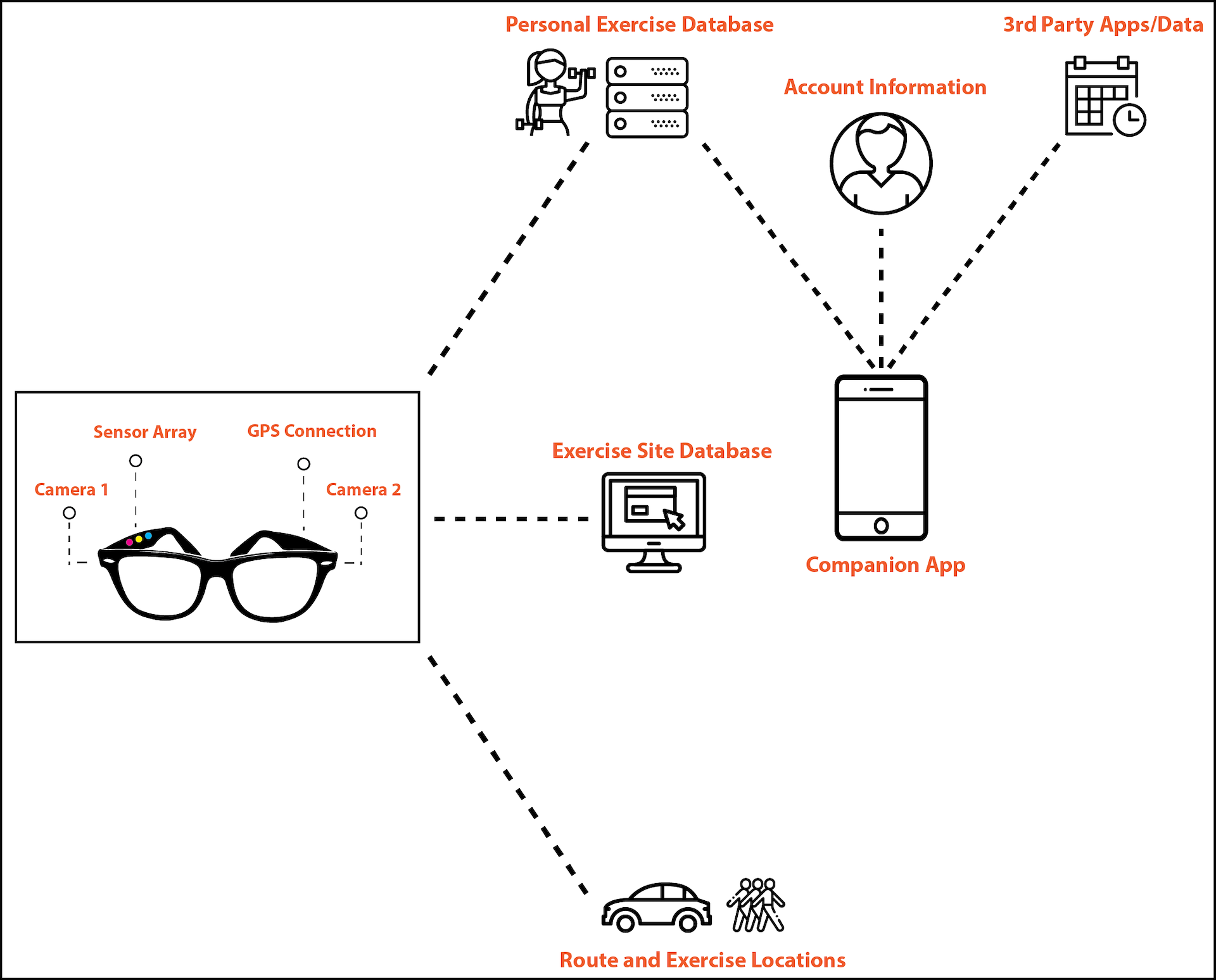
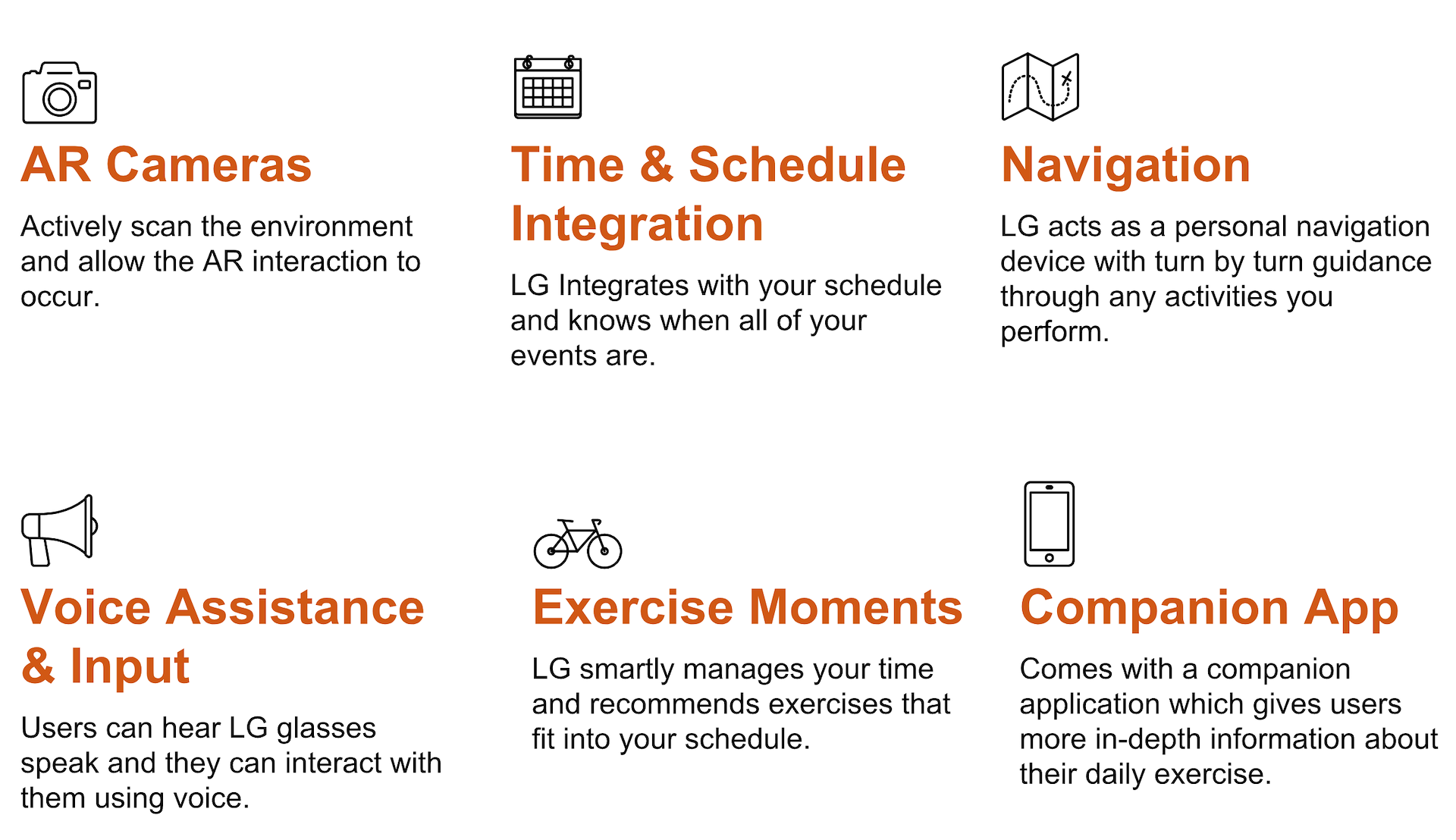
- User Enactments
As a form of rapid prototyping, we conducted User enactments with 5 participants. We ran each participant through several scenarios with only a pair of sun-glasses and some paper mocks to simulate augmented reality.
We were mainly looking to learn how students interacted with such a system and what pain points they ahead.
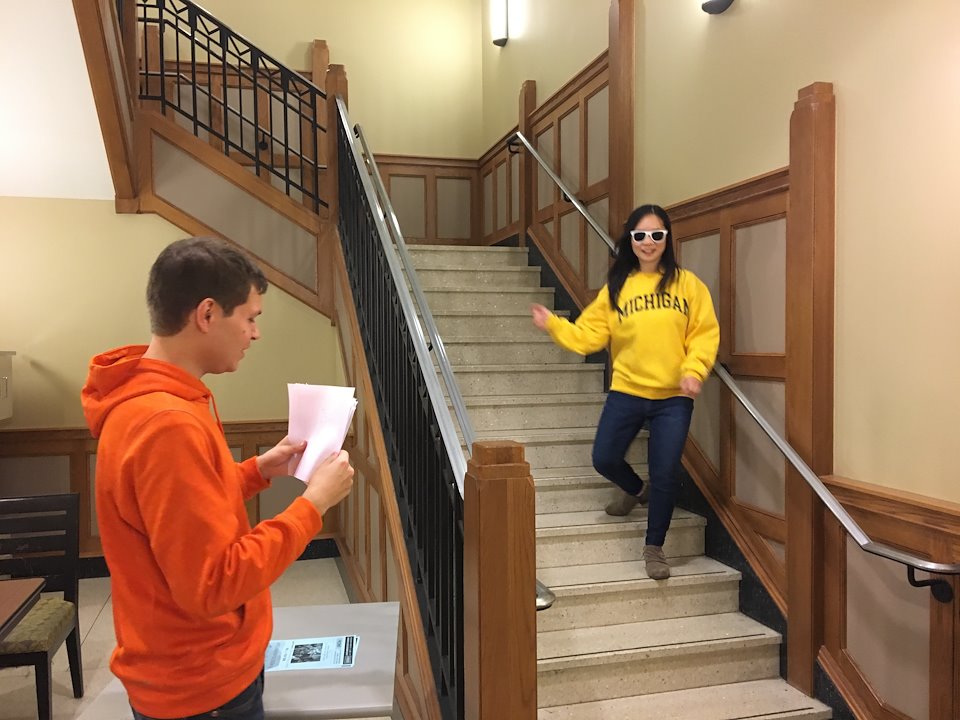
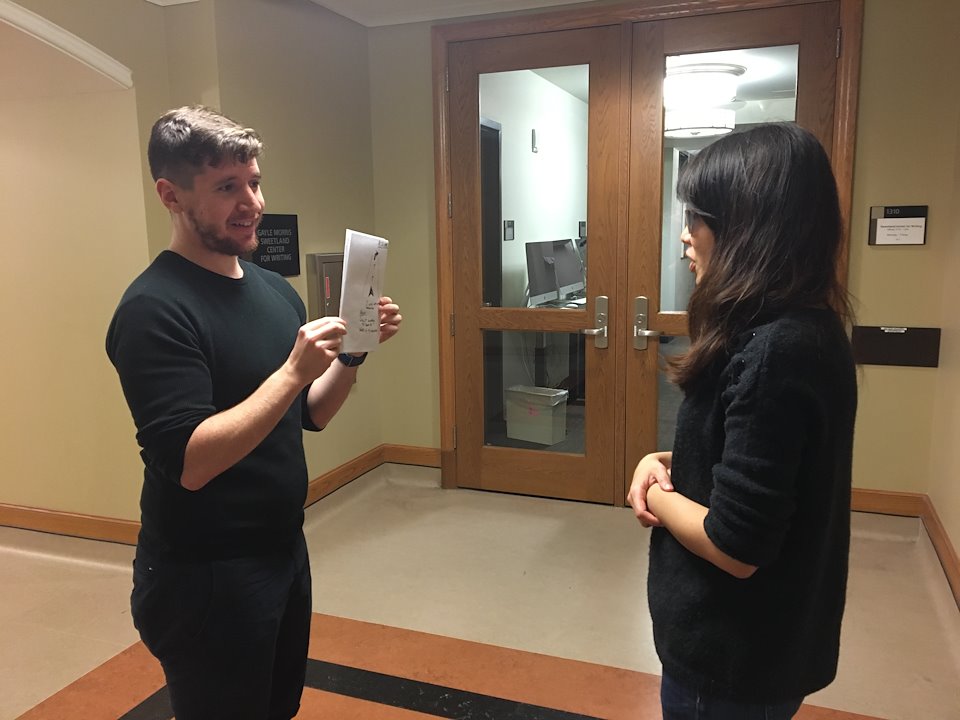
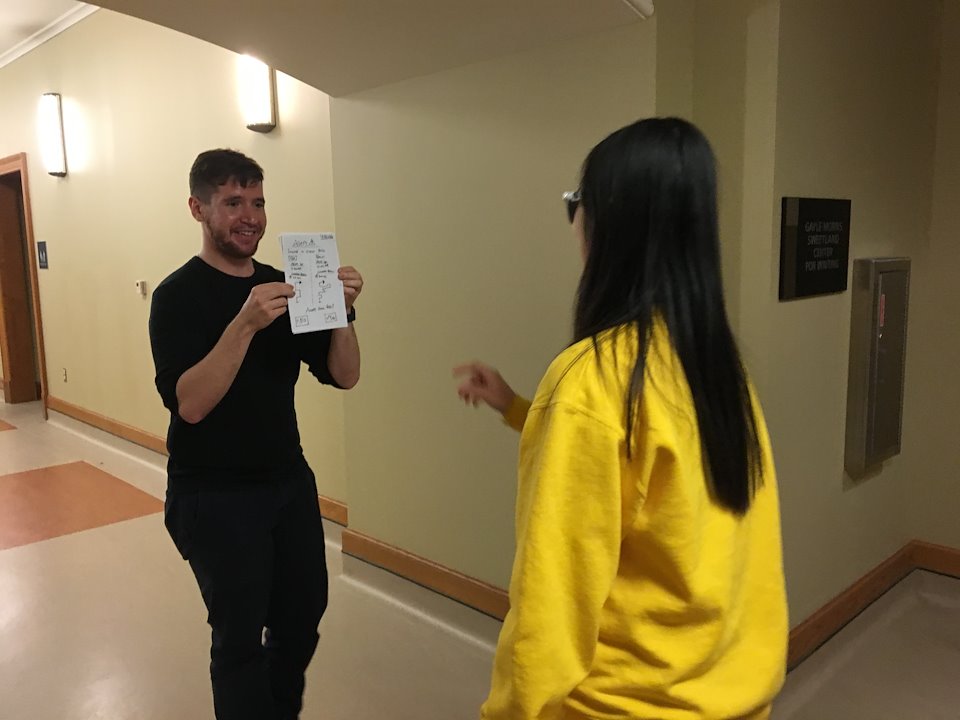
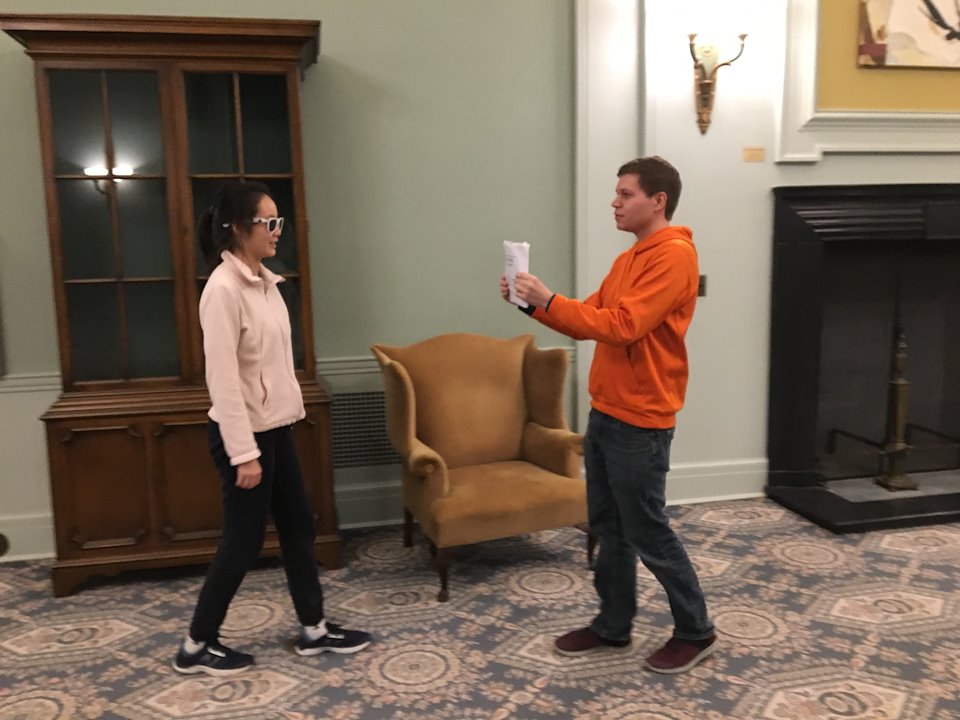
Scenario:
Route Overview
For this scenario, we were trying to learn what kind of information could be valuable when planning a route such as a type of overview and the level of detail.
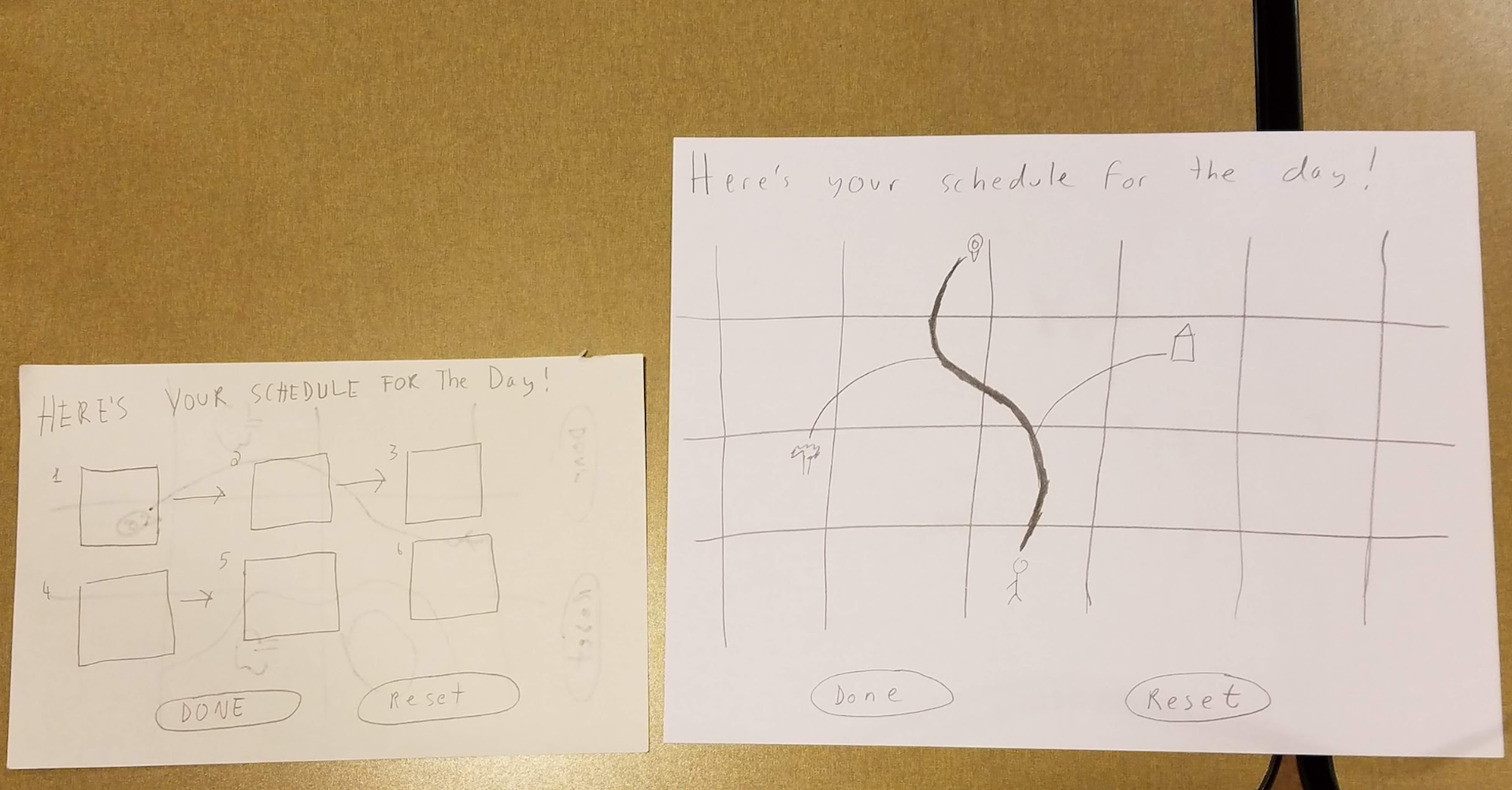
Scenario:
Exercise Moments
This scenario included “spontaneous” moments of exercise that participants would be given the choice of taking or not.
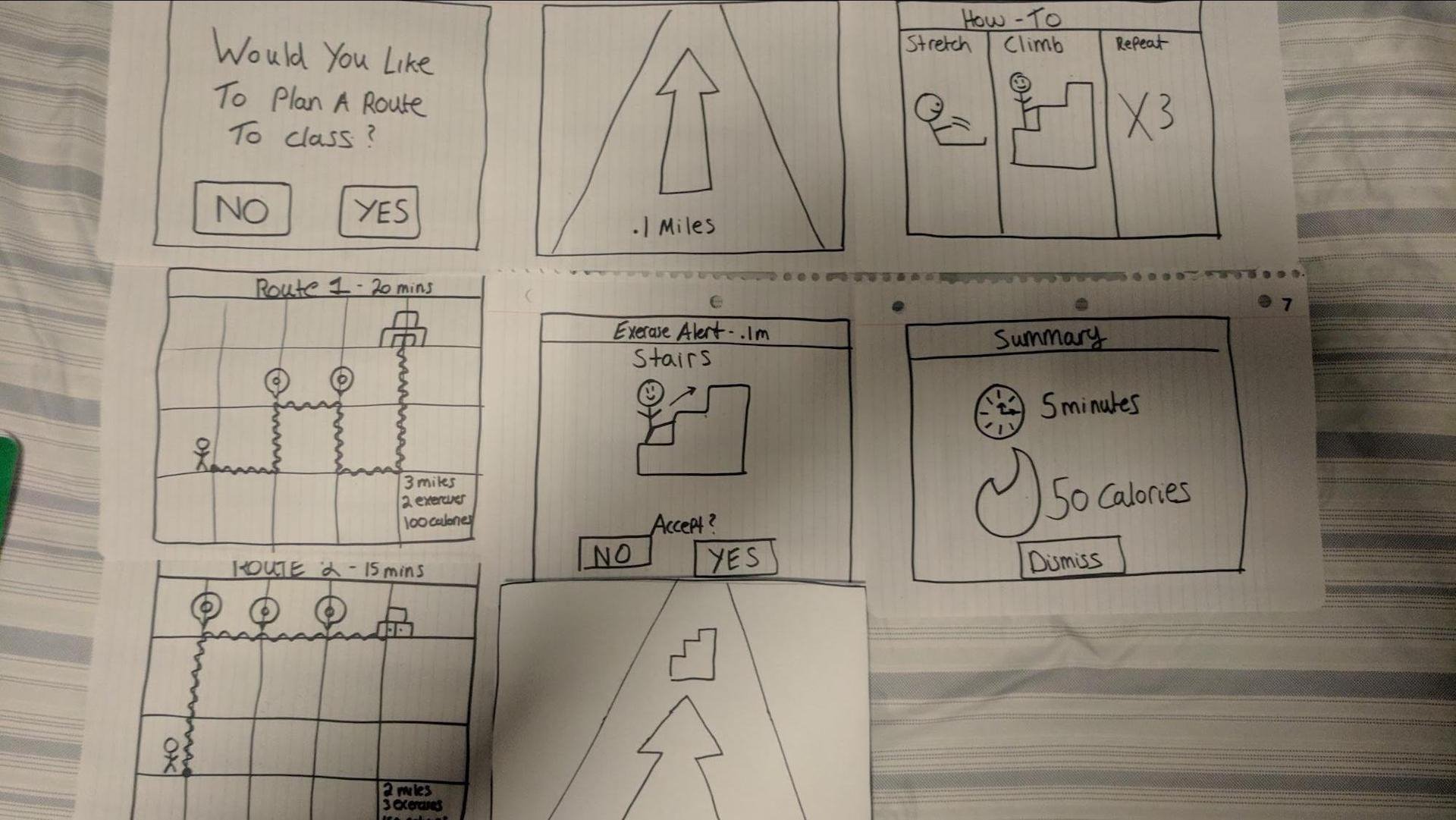
Low-Fidelity AR
Moment of Exercise
During moments on their journey, students would get the chance to do a moment of exercise.
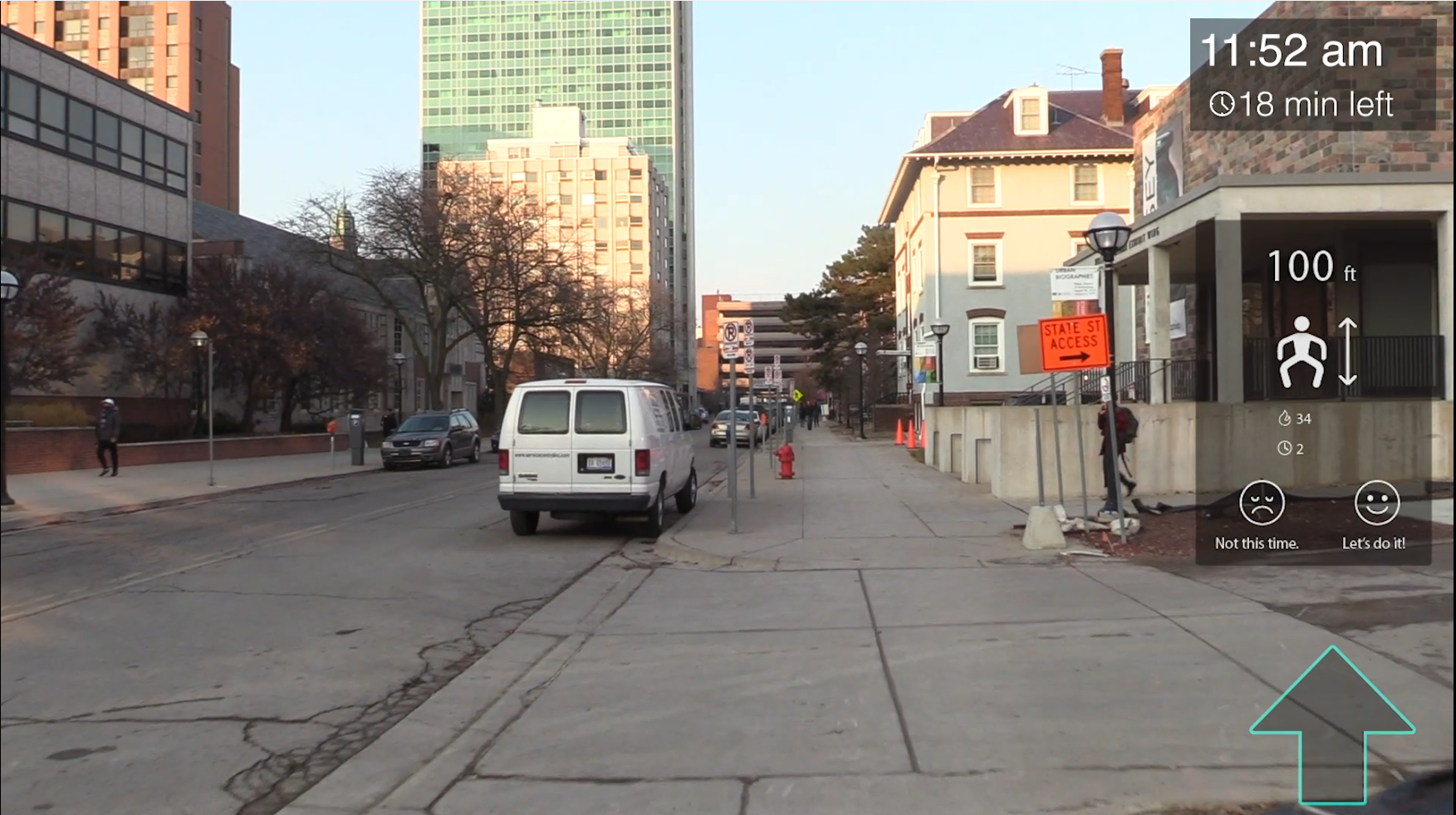
Journey Summary
At the end of the route when the student reached their destination, they’d get a summary of their journey.
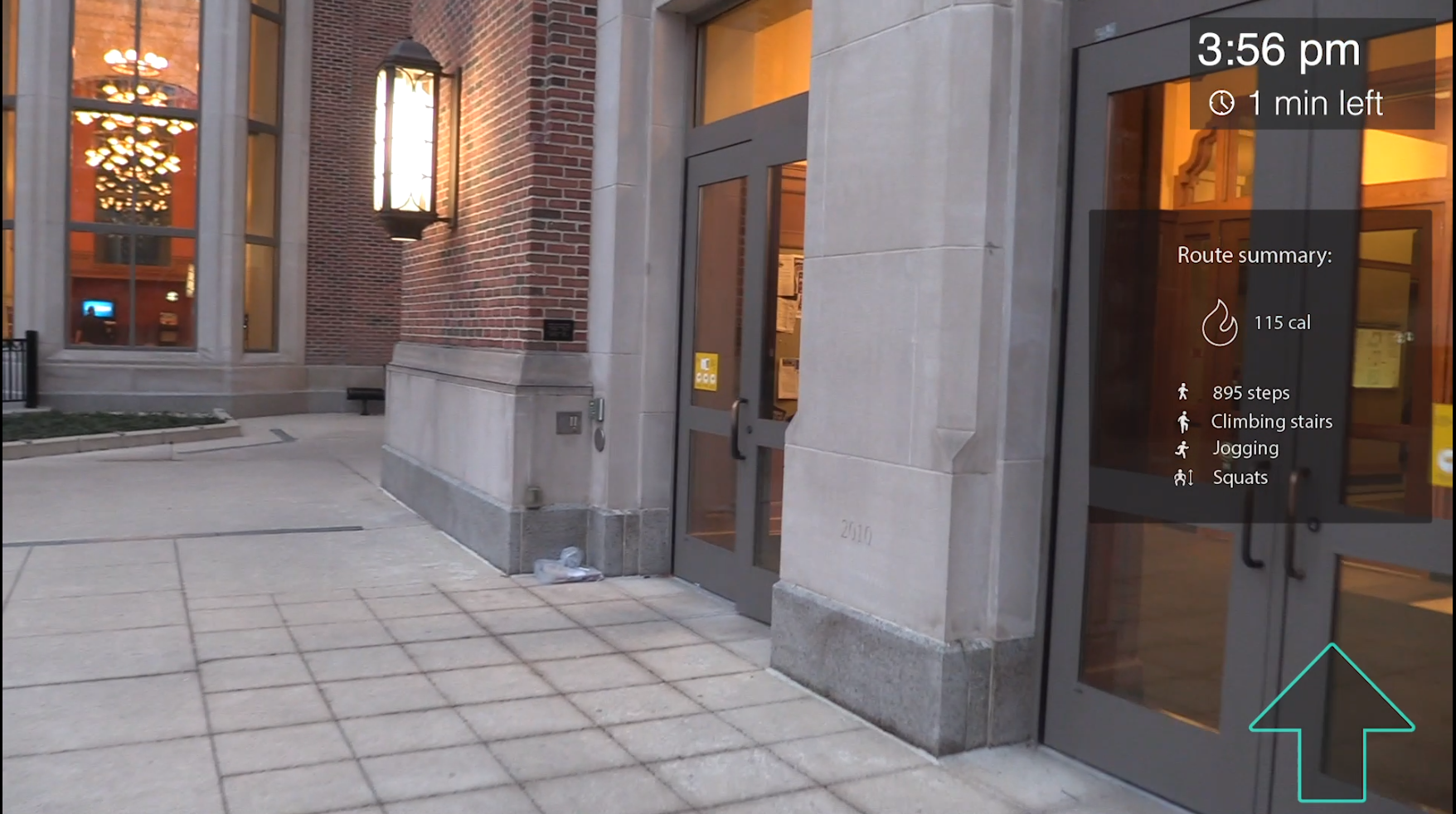
Gear VR
For our high-fidelity prototype, we utilized a Samsung phone & a Samsung Gear VR.
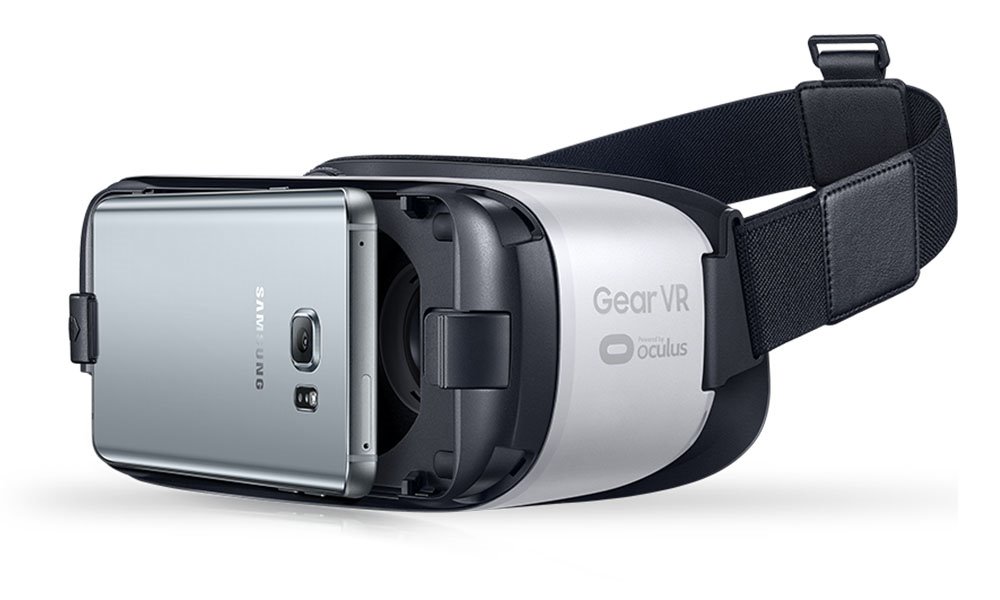
A-Frame
A-Frame was designed specifically for VR, but we utilized an Android’s phone camera as a source to simulate the world and then added elements onto the screen. This essentially created a makeshift AR experience.
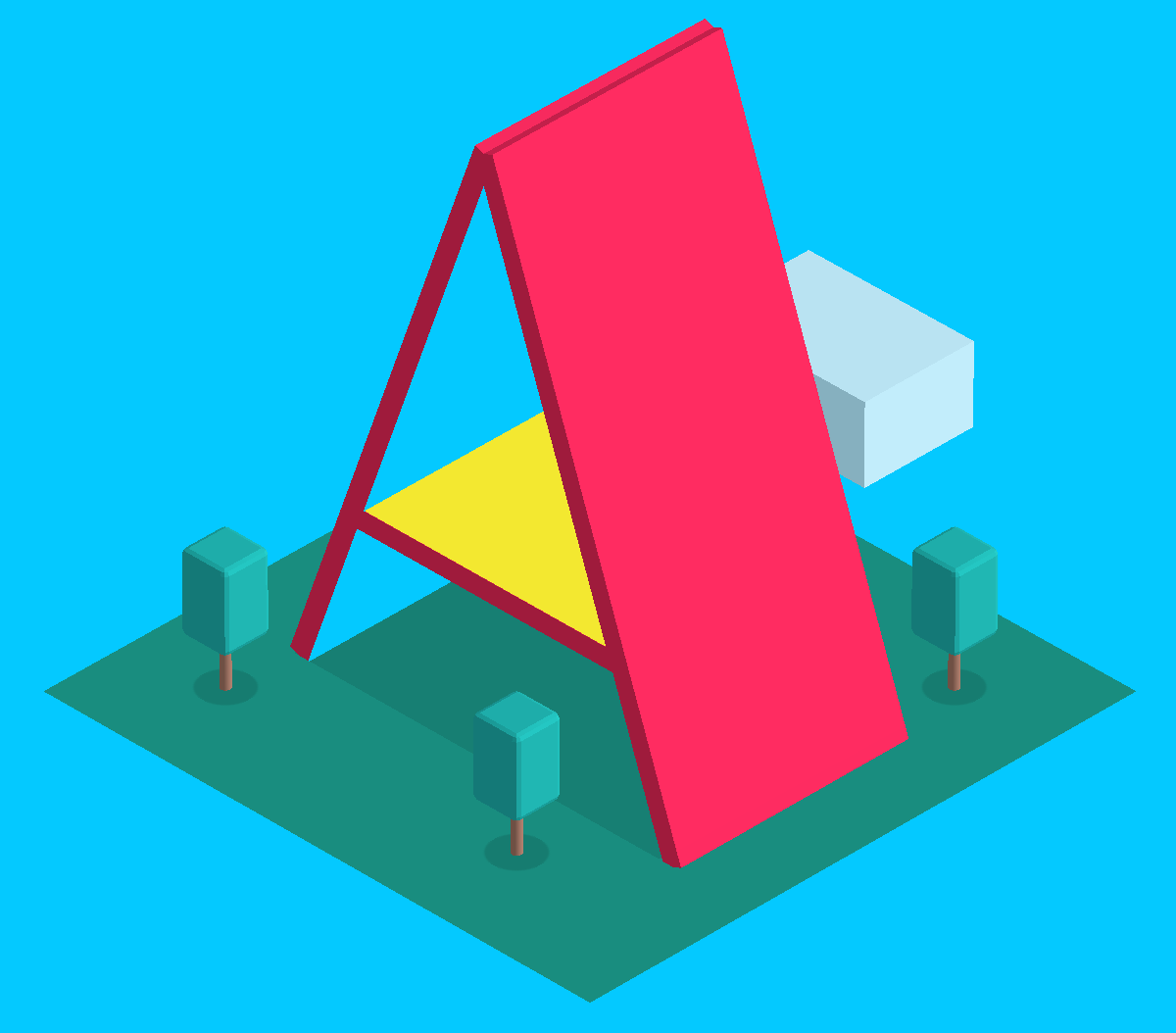
Reflection
- During this project, we were ambitious in creating something that we thought students at the University would enjoy and greatly benefit from it.
Voice Interactions
Furthermore, in our early testing, we had quickly learned that a lot of our participants interacted with our prototype using their voice which we didn’t anticipate. Due to time limitations, we were not able to implement it in the prototype.
Short of a Miracle
Our ambition to scan the environment and provide contextual suggestions and new exercise opportunities weren’t achieved in our prototype.
The computer vision and machine learning requirement in a small form factor isn’t realistic right now.
Perhaps in the future, such design could come to fruition.